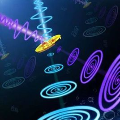Quantum algorithms for tasks such as factorization, search, and simulation rely on control flow such as branching and iteration that depends on the value of data in superposition. High-level programming abstractions for control flow, such as switches, loops, and higher-order functions, are ubiquitous in classical languages. By contrast, many quantum languages do not provide high-level abstractions for control flow in superposition, and instead require the use of hardware-level logic gates to implement such control flow. The reason for this gap is that whereas a classical computer supports control flow using a program counter that can depend on data, the typical architecture of a quantum computer does not provide a program counter that can depend on data in superposition. As a result, the complete set of control flow abstractions that can be correctly realized on a quantum computer has not yet been established. In this work, we provide a complete characterization of the properties of control flow abstractions that are correctly realizable on a quantum computer. First, we prove that even on a quantum computer whose program counter exists in superposition, one cannot correctly realize control flow in quantum algorithms by lifting the classical conditional jump instruction to work in superposition. This theorem denies the ability to directly lift general abstractions for control flow such as the $\lambda$-calculus from classical to quantum programming. In response, we present the necessary and sufficient conditions for control flow to be correctly realizable on a quantum computer. We introduce the quantum control machine, an instruction set architecture featuring a conditional jump that is restricted to satisfy these conditions. We show how this design enables a developer to correctly express control flow in quantum algorithms using a program counter in place of logic gates.
翻译:暂无翻译




